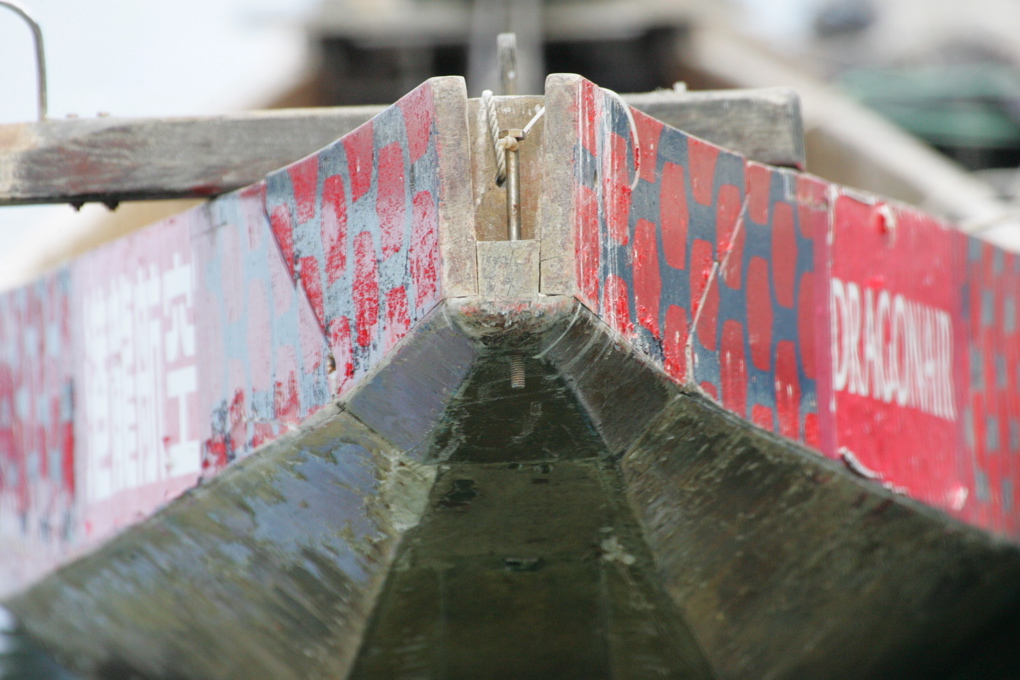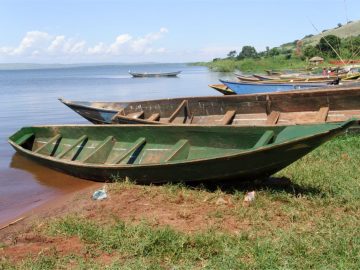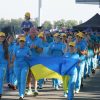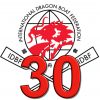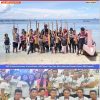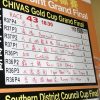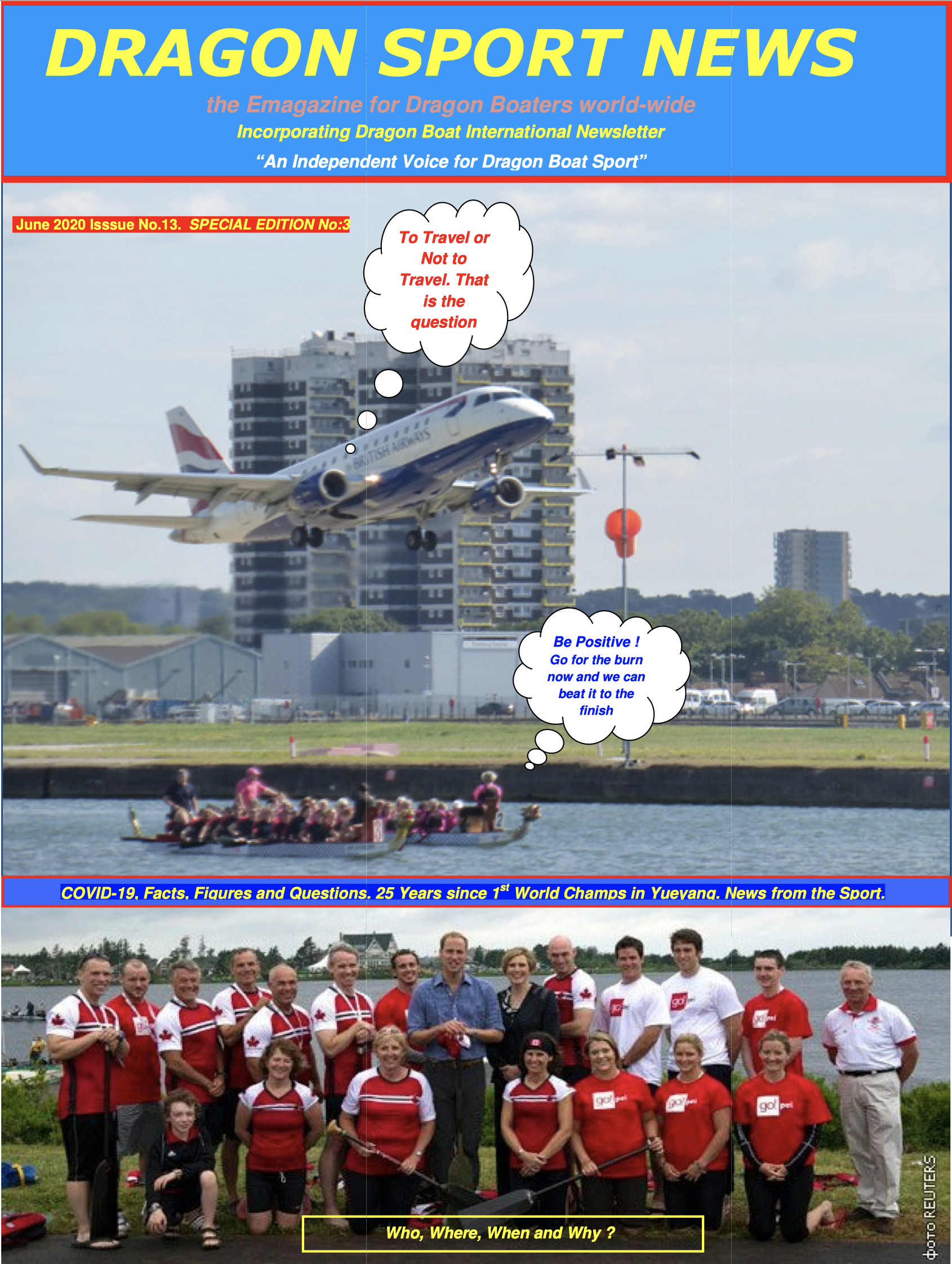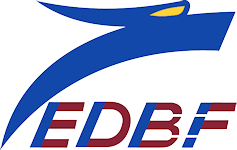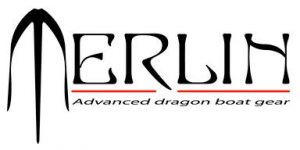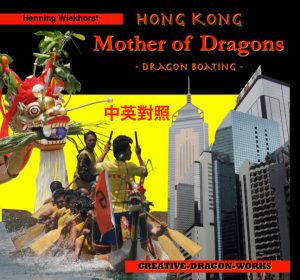“Biomechanics of Dragon Boat Racing” is a four-parts-series of scientific articles written by Sarah Ho to be published in the magazine “Dragon Boat World International” (DBWI), this Part 1 in edition No. 4 -October 2008.
After completing a bachelor degree in Exercise and Sport Science (University of Sydney) in 2005, she began an honours research project into the biomechanics of on-water dragon boat paddling. At the time completing a PhD at the University of Sydney, she investigated various aspects of dragon boat racing such as: the physiology of dragon boat racing, physique and physiological characteristics of elite paddlers and 3D biomechanics of simulated on-water paddling.
Part 1: Introduction
Although dragon boat racing is one of the fastest growing water sports in the world, to date there has been little research conducted on scientific aspects of this sport. As competitive participation in dragon boat racing continues to increase, the optimisation of paddling technique is paramount, particularly in elite crews who are already at the peak of their physical fitness1. Although changes to dragon boat and paddle design could potentially improve hydrodynamic properties and performance, the IDBF enforce regulations limiting major changes to boat and paddle designs allowed during IDBF-sanctioned events in order to preserve the cultural significance of dragon boat racing. Therefore, the greatest opportunity for performance improvement, particularly for elite crews, is through the modification of paddling technique and race tactics.
In a sport where winning margins can be as little as fractions of a second, any minor improvement in technique can translate to the difference between first and second place. However, with limited empirical evidence on the dynamics of paddle and boat propulsion and few standardised or quantifiable methods to evaluate paddling performance, it is difficult to identify ways to improve dragon boat paddling technique.
As the most successful sporting associations in international sport are those that apply a scientifically based system for research and performance analysis2, it is clear that scientific research and analysis plays a vital role in the development of dragon boat racing. Scientific research can provide various benefits to the sport such as a greater understanding of paddle and boat propulsion, identification of the major muscle power producers, improvement of paddling technique, enhancement of current coaching methods, reduction in dragon boat-related injuries and ultimately the optimisation of dragon boat performance.
Biomechanical analysis of water sports
Biomechanics is the branch of science that involves the study of application of forces (kinetics) to biological systems to produce movement (kinematics). Biomechanical analysis has been conducted in other water sports such as rowing, kayaking and canoeing through video and force analysis techniques. During on-water dragon boat paddling, there are few ways to accurately “measure” the performance of each individual paddler. Biomechanical analysis presents a method of reliable, quantitative analysis and can provide basic information about parameters of paddling skill, allow the comparison of individual techniques, establish ‘normal’ ranges and provide a means by which the athlete’s performance can be monitored3, 4.
Biomechanical analysis can be applied to dragon boat racing through techniques to measure the kinetics of the blade and kinematics of the blade and paddler. These techniques should fulfil certain practical requirements such as being cost-effective, easy to apply and repeatable to allow for comparison of results. The approach adopted for performance analysis should be based on whether it provides information that is easily interpretable and applicable to coaches and athletes5.
Kinetic Analysis
Measurement of force at the blade can provide valuable information about characteristics of the paddler’s technique such as the force profile (a graphical representation of paddle force with time or paddle angle), power and efficiency (more in the next issue of Dragon Boat World International). In analysing the kinetics of the athlete, descriptive and comprehensive variables should be used to provide feedback to coaches and athletes. This feedback may be an important factor in motor learning for the athlete and should be provided as soon as possible after the event6, 7, 8.
Analysis of the blade force profile characteristics of the athlete may be a more reliable and objective basis for prescribing technique modifications than based on visual analysis of the stroke and observed relationships between the pressure on the blade and progress of the boat1, 2, particularly where there are 20 paddlers who are contributing to boat movement simultaneously.
Previous studies in rowing6, 8, 10, 11, 12, kayaking1 and canoeing13 have developed instrumentation systems to measure the on-water forces developed at the blade during rowing and paddling through the use of force sensors. This technology has recently been applied to dragon boat racing with the development of the Merlin Excalibur paddle which uses a force sensor to measure paddle force. These instrumentation systems should meet certain practical requirements such as being accurate, reliable, lightweight and portable. These systems must also be waterproof and should remain stable across a range of changing ambient humidity and temperatures. In addition, the instrumentation system must not interfere with the athlete’s equipment or alter the athlete’s normal technique1, 7, 8.
Ergometers simulating on-water rowing and paddling have been developed to measure the force-profiles of rowers8, 14 and canoeists15, and offer an alternative method for assessing athletic performance. The Concept II rowing ergometer (modified with a paddling adaptor) has also been commonly used in dragon boat racing to assess dragon boat performance. Although ergometers provide a controlled environment to allow for comparisons between athletes14, eliminating various confounding factors associated with on-water trials such as wind conditions and current, the challenge lies in developing ergometers that accurately simulate the on-water paddling motion. To ensure that the modified Concept II ergometer is an appropriate method for crew selection and testing, the kinetics and kinematics of paddling on the Concept II ergometer should be validated by comparison with kinetic and kinematic data of on-water dragon boat paddling.
Kinematic Analysis
Video analysis techniques can be applied to dragon boat racing to provide information about the kinematics of the paddler and paddle blade at key phases of the stroke, such as trunk angle and shoulder angle at paddle entry. On the water, video filming is adequate to provide a basic visual analysis of the stroke. For a more detailed two-dimensional analysis of movement, video data of the paddle blade and paddler can be analysed through ‘digitising.’ Digitising is a simple but time-consuming process whereby video data is analysed frame-by-frame by pointing to specific body and paddle landmarks on the computer screen and converting this information into position data. A two-dimensional figure is created from these data and the position, angle, velocity and acceleration of various body joints and segments and of the paddle can then be calculated at different phases of the stroke.
Whilst video analysis is valuable for providing feedback on paddler’s kinematics, video data alone does not provide sufficient information to accurately quantify or analyse the stroke6, 9. In order to provide a comprehensive analysis of the paddler’s technique, information about the paddler’s kinematics from video data should be used in combination with force data collected from the blade during on-water paddling8, 13.
Summary
Biomechanical analysis techniques have already been applied in rowing, kayaking and canoeing research through the measurement of force (kinetics) and movement (kinematics) in order to improve athletic performance. A similar approach should be taken in dragon boat racing to better understand the dynamics of paddle and boat propulsion and for performance analysis. Biomechanical analysis can provide the dragon boat community with knowledge to optimise current paddling techniques and assist coaches in administering guidance based on empirical evidence and quantitative information rather than simple observations. The adoption of a scientific perspective in dragon boat research and performance analysis has great potential to assist this underdeveloped sport in achieving higher professionalism towards training and coaching.
Coming up next …
- How can biomechanics be applied to improve paddling technique? Kinetics of dragon boat racing
References
- Aitken D. & Neal, R. J. (1992). An on-water analysis system for quantifying stroke force characteristics during kayak events. International Journal of Sport Biomechanics, 8, 165 – 171.
- Lenz, J. (1994). Theorie und training. In Leistungs- und Trainingslehre Kanusport (edited by J., Lenz), pp. 95 – 103. Leipzig, Deutschland.
- Mann R. V. & Kearney, J. T. (1980). A biomechanical analysis of the Olympic-style flatwater kayak stroke. Medicine and Science in Sports and Exercise, 12, 183 – 188.
- Sperlich J. & Baker, J. (2002). Biomechanical testing in elite canoeing. In Proceedings of the XXth International Symposium in Sports Biomechanics (edited by K. E., Gianikellis), pp. 44 – 47. Spain: University of Extremadura.
- Plagenhoef, S. (1979). Biomechanical analysis of Olympic flatwater kayaking and canoeing. Research Quarterly, 50, 443 – 459.
- Ishiko, T. (1971). Biomechanics of rowing. In Biomechanics II (edited by J. Wartenweiler & E. Jokl), pp. 249 – 252. Karger, Basil.
- McBride, M. (1999). The role of individual and crew technique in the optimisation of boat velocity in rowing. PhD thesis, The University of Western Australia, Perth.
- Smith, R. M. & Spinks, W. L. (1998). A system for the biomechanical assessment of rowing performance (ROWSYS). Journal of Human Movement Studies, 34, 141 – 157.
- Spinks, W.L. (1996). Force-angle profile analysis in rowing. (Review). Journal of Human Movement Studies, 3, 211 – 233.
- Ishiko, T., Katamoto, S. & Maeshima, T. (1981). Analysis of rowing movements with radiotelemetry. In Biomechanics VIII–B (edited by H. Matsui & K. Kobayashi), pp. 816 – 821. Champaign, IL.
- Kleshnev V. (1999). Propulsive efficiency of rowing. In Proceedings of the XVII International Symposium on Biomechanics in Sports (edited by R. H., Sanders & B.J., Gibson), pp. 69 – 72. Perth: Edith Cowan University.
- Schneider, E., Angst, F. & Brandt, J. D. (1977). Biomechanics in rowing. In Biomechanics IV-B (edited by E. Asmussen & K. Jorgensen), pp. 115 – 119. Baltimore: University Press.
- Staniak, Z. Nosarzewski, Z., Karpilowski, B. & Sitkowski, D. (1999). Analysis of canoe boat acceleration. Biology of Sport, 16, 267 – 272.
- Smith , R. & Spinks, W. (1995). Discriminant analysis of biomechanical variables of novice, good and elite rowers. Journal of Sports Sciences, 13, 377 – 385
- Pelham, T. W. & Holt, L. E. (1996). Biomechanical analysis of two elite canoeists. In XIII International Symposium for Biomechanics in Sports: Proceedings (edited by T. Bauer), pp. 83 – 87. Thunder Bay, Ontario: Lakehead University.




